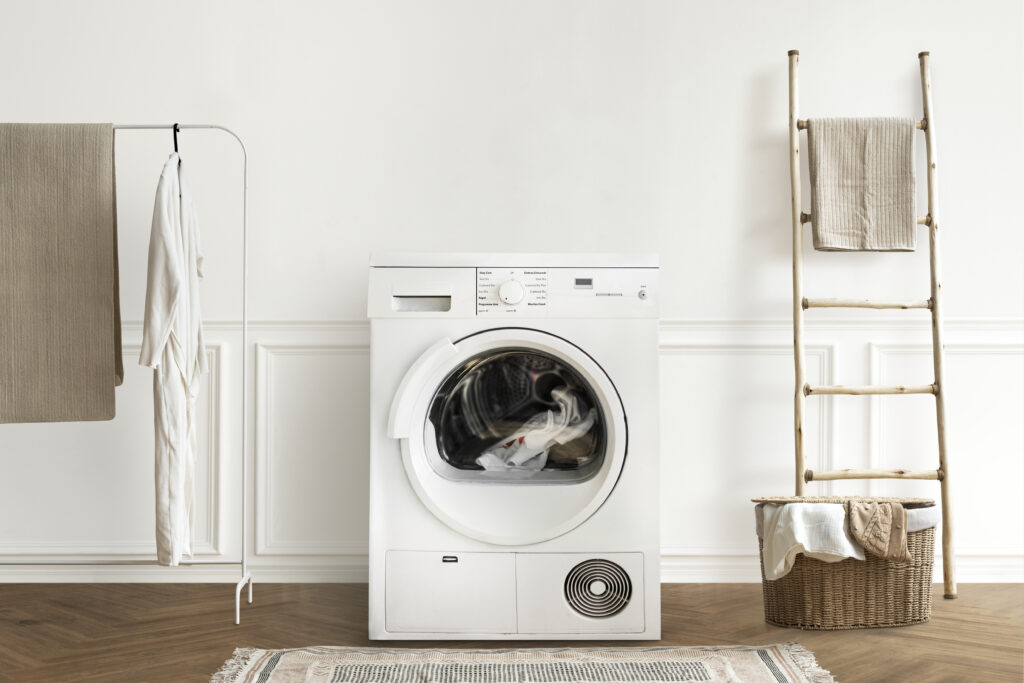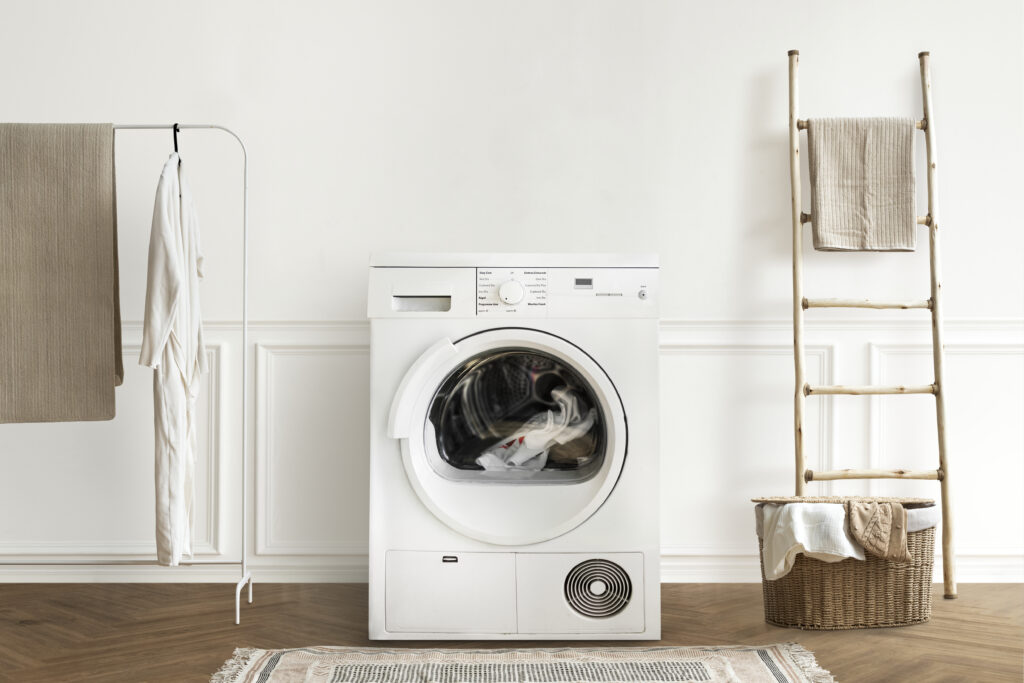Nothing is more annoying than discovering your clothes sitting in a pool of murky water when you open your washing machine after a cycle. Your entire laundry routine may be disrupted if your washing machine isn’t draining correctly, and if it isn’t fixed right away, it may even damage your machine. Drainage issues are frequent, regardless of whether you have a front-loading or top-loading washer, but fortunately, many of them are simple to resolve at home.
In this comprehensive guide, we’ll outline the possible causes of your washing machine’s non-draining, offer detailed troubleshooting advice, and advise when to hire a professional. Let’s restore your washer to its best condition!

The most common causes of a washing machine that won’t drain are as follows: 1. Clogged Drain Hose Debris, small clothing items like socks, or lint can clog the drain hose, preventing water from flowing out of the machine. 2. Blocked or Dirty Pump Filter Modern washing machines, particularly front loaders, have a filter that collects debris before it reaches the pump. If this filter is clogged, water won’t drain properly.
- A malfunctioning drain pump
The drain pump motor won’t be able to efficiently push water out of the washer if it is damaged or clogged with debris. - Bent or Kinked Drain Hose
A pinched or bent hose can impede water flow and completely stop drainage. - Problem with the door switch or lid
A malfunctioning lid switch on top-load washers can prevent the washer from spinning and draining. Your washer may stop in the middle of the cycle if the lid isn’t shut all the way or if the switch is broken. - A clogged household plumbing system or standpipe
Occasionally, the standpipe or drain into which your washer empties is the issue rather than the washer itself.
A Step-by-Step Guide to Fixing a Washing Machine That Won’t Drain
Don’t freak out if your washing machine isn’t draining. Before you call a technician, troubleshoot and resolve the issue yourself by following these easy steps.
Step 1: Turn off the computer and disconnect it.
Always unplug your washer from the electrical outlet before doing any repairs or inspections for your own safety.

Step 2: Empty the Water by Hand
If there is water in the washer drum:
Put a bucket or shallow pan underneath the drain filter section.
Empty the water slowly using the drain tube if your washer has one, which is usually located close to the filter.
Alternately, carefully remove the standpipe’s drain hose and place it in a bucket.
Expect spills!
Step 3: Examine and maintain the drain filter.
A tiny access panel is typically located at the bottom of front-load washers.
Remove the filter cap by unscrewing the panel.
Take out any buttons, coins, lint, or other debris.
Reinstall the filter firmly after rinsing it under running water.
Step 4: Examine the Drain Hose. Disconnect the drain hose from the utility sink or standpipe and the back of the washer.
Use a garden hose to run water through it to check for obstructions.
Any bends or kinks that might be impeding the flow should be straightened out.
Step 5: Examine the Drain Pump
If the water still won’t drain even after the hose and filter are clear:
Remove the bottom or rear panel to gain access to the pump.
Examine the pump’s impeller or housing for any debris.
The pump motor might need to be replaced if it isn’t operating during the drain cycle.
Step 6: Check the Door Switch or Lid
In the event that your washer is top-load:
Verify that the lid is closing correctly.
Use a multimeter to check the lid switch’s continuity.
If it’s broken, replace it because without a functional switch, the washer won’t spin or drain.
Step 7: Examine the household drain or standpipe.
Water can back up into your washer from a clogged or slowly draining standpipe.
To remove obstructions, use a drain cleaner or a plumber’s snake.
To avoid siphoning, make sure the standpipe height is within the manufacturer’s recommended range, which is typically 30 to 96 inches.

When to Make a Professional Call
Sometimes it’s best to call a certified appliance repair technician, even though many drainage problems can be fixed with simple do-it-yourself troubleshooting.
if a new drain pump is required.
if any electrical parts—such as the control board—aren’t working properly.
if the issue continues after several drainage attempts fail.
if opening the machine yourself makes you uncomfortable.
Depending on the problem and your location, washing machine repairs in the USA usually cost between $100 and $350.
Avoiding Future Drainage Issues
Use these easy maintenance suggestions to keep your washing machine draining smoothly:
✅ Clear the filter Frequently
Every one to three months, check and clean the drain filter in your washer, especially if you wash pet bedding or highly soiled items.
Examine and align the drain hose.
Verify that the drain hose behind the machine isn’t bent or kinked every few weeks.
Steer clear of overloading
An excessive amount of laundry can strain the drain pump and raise the risk of clogs.
Make Use of the Proper Detergent
Excess suds from ordinary detergent (instead of HE detergent in high-efficiency machines) can impede draining and result in accumulation.
✅ Watch Over Little Things
To keep small items like handkerchiefs, bras, and baby socks from clogging the hose or pump, place them in a mesh laundry bag.
FAQs Regarding Drain Issues with Washing Machines
How frequently should the filter in my washing machine be cleaned?
A: Ideally, once a month, particularly if you have pets or do a lot of laundry.
Is it possible to clear a washing machine drain with vinegar?
A: Although they won’t remove stubborn blockages, vinegar and baking soda can assist with minor accumulation inside the drain hose. Always check for debris by hand first.
Why is my top-load washer spinning instead of draining?
A partially clogged drain hose or a problem with the drain pump could be the cause. Throughout the cycle, listen for pump activity and check for obstructions.

Concluding remarks
Although a washing machine that refuses to drain can be inconvenient, most problems can be resolved with a little do-it-yourself work. Without expert assistance, you can frequently get your washer operating smoothly again by cleaning the drain filter and checking the drain hose and pump.
But if you have complicated repairs, motor failures, or electrical problems, don’t be afraid to call a qualified technician. Your laundry routine will remain flawless with regular upkeep and a little attention to detail.
Do you have a troubleshooting story or drainage tip for your washer? Post it in the comments section below!

Leave a Reply